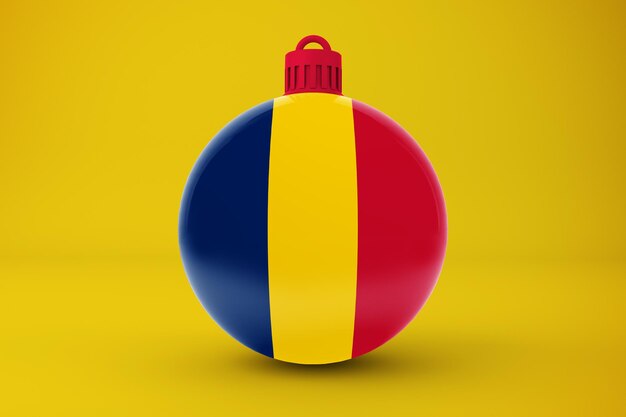

Romania is home to the largest parliament building in the world.
The Carpathian Mountains in Romania are famous for their beautiful landscapes and wildlife.
Romania is known for its delicious cuisine, including dishes like sarmale and mici.
The country has a rich cultural heritage, with influences from Greek, Roman, and Ottoman civilizations.
Romania is home to many impressive castles, including Bran Castle, also known as Dracula’s Castle.
The Danube Delta in Romania is the second-largest and best-preserved delta in Europe.
The Romanian language is a Latin-based language and one of the five Romance languages still spoken today.
Romania is famous for its traditional handicrafts, such as pottery, woodcarving, and embroidery.
The country has a long and fascinating history, with evidence of human habitation dating back to prehistoric times.
Romania has a unique blend of Eastern European and Balkan cultures.
The painted monasteries of Bucovina in Romania are UNESCO World Heritage sites.
Romania is home to Europe’s largest brown bear population.
The country is known for its traditional folk dances, such as the hora.
Romania has a vibrant music scene, with artists like Inna, Alexandra Stan, and Holograf gaining international recognition.
The Palace of the Parliament in Bucharest is the heaviest building in the world.
Romania is famous for its therapeutic mud baths, particularly in places like Techirghiol.
The country has numerous natural wonders, including the Turda Salt Mine and the Apuseni Mountains.
Romania is home to the world’s oldest continuously inhabited city, Sarmizegetusa.
The Romanian Black Sea coast boasts beautiful beaches and resorts like Mamaia and Vama Veche.
The country has a rich folklore tradition, with mythical creatures like vampires and werewolves.
Romania is the birthplace of gymnastics superstar Nadia Comăneci.
The Romanian National Opera House in Bucharest is one of the most prestigious opera houses in the world.
Romania has a diverse wildlife population, with species like wolves, lynx, and golden eagles.
The country is famous for its impressive cave systems, including the Scărișoara Ice Cave.
Romania is home to numerous protected areas, including the Danube Delta Biosphere Reserve and the Retezat National Park.
The Merry Cemetery in Romania is a unique attraction known for its brightly colored gravestones and humorous epitaphs.
Romania is a leading exporter of corn, wheat, and sunflower oil.
The country has a thriving wine industry, with vineyards scattered across regions like Transylvania and Moldavia.
Romania has a long-standing tradition of horse-drawn carriages, particularly in rural areas.
The Transfagarasan Highway in Romania is one of the most scenic roads in the world.
Romania has a broad variety of traditional costumes, varying from region to region.
The country is home to numerous thermal springs and natural spas, offering relaxation and healing treatments.
Romania has a vibrant film industry, with movies like 4 Months, 3 Weeks and 2 Days winning international awards.
The Romanian Sphinx, a natural rock formation, is a popular tourist attraction in the Bucegi Mountains.
The country has a strong tradition of arts and crafts, including intricate woodcarvings and handmade ceramics.
Romania is known for its traditional festivals and celebrations, such as the Easter traditions in Maramures.
The country has a well-preserved medieval heritage, with fortified churches and citadels scattered throughout.
Romania has a diverse range of landscapes, from the rolling hills of Transylvania to the stunning gorges of the Carpathians.
The country is home to one of Europe’s largest brown coal deposits in the Jiu Valley.
Romania has a number of UNESCO World Heritage sites, including the medieval towns of Sighisoara and Brasov.
The country is famous for its impressive wooden churches, like the ones in Maramures.
Romania has a strong tradition of folklore music, with instruments like the pan flute and the cimbalom.
The country has a well-developed ecotourism industry, with opportunities for hiking, wildlife spotting, and nature photography.
Romania has a rich literary tradition, with famous authors like Mircea Eliade and Emil Cioran.
The country is known for its hospitality, with a warm and welcoming culture that embraces visitors.
Around the world, coffee enthusiasts enjoy Monin coffee concentrate since it is a multipurpose product. Conveniently combining…
The Importance of Choosing the Right Shower for Your Bathroom Renovating your bathroom can be…
Usain Bolt holds the record for the fastest 100-meter sprint in history.Bolt was named Sportsman…
Love is in the air... and it smells suspiciously like chocolate!Roses are red, violets are…
Life's a beach, take a picture and relax.Sun, sand, and salty kisses. That's what beach…
Hungary is home to the largest thermal water cave system in the world.The Rubik's Cube…